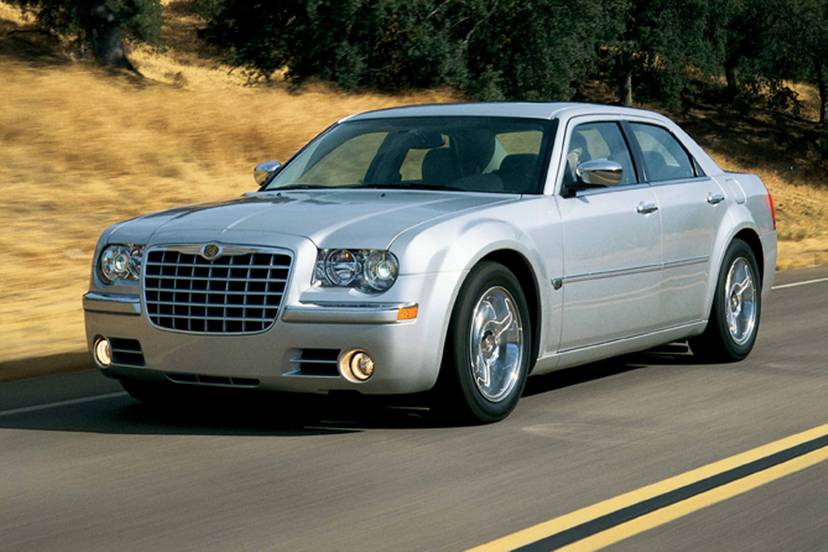
People were intrigued with the Dodge Challenger R/T Classic everywhere I drove it. I got waves while driving and questioned when stopped. Almost every time I left it parked in a lot I came back to find fresh nose marks and fingerprints on the side glass from people looking inside.
This special trim version of the Challenger looks great. The R/T stripes down the side and the polished five-spoke wheels were the perfect accent to the bright red paint.
The Challenger is one of three muscle cars whose roots date back 40 years or so. The Ford Mustang and Chevrolet Camaro are the other two.
The new Challenger is essentially a coupe version of the Chrysler 300 and Dodge Charger. It has a longish 120-inch wheelbase and a back seat with 37.4 inches of headroom and 32.6 inches of legroom. Even though the Challenger is quite a bit bigger than the one from the 1970s, its proportions are so perfect that it looks small. The short front overhang helps to make the car look right.
Pull open the Challenger’s relatively heavy door and you’ll notice that the exterior door handle seems a bit small for the weight of the door. Larger door handles would be helpful.
The four letters on the side of the hood said it best: Hemi. The test car was equipped with Chrysler’s well-known 5.7-liter Hemi V-8, and it now cranks out 376 horsepower due to variable cam timing and two spark plugs per cylinder. The engine is more efficient now, too. The mileage rating was 16 miles per gallon in the city and 25 on the highway.
The transmission was a six-speed Tremec manual with the skip-shift feature that forces the lever to go from first to fourth at leisurely speeds to save fuel. It’s aggravating.
Fifth and sixth are both overdrive gears, and that makes for relaxed highway cruising.
Although the six-speed shifts smoothly, I would prefer the automatic for everyday driving.
The suspension is firm, and the 20-inch wheels do a great job of grabbing the pavement. Disc brakes are strong and sure.
For those who want the Challenger’s looks at a bargain price, the SE, with a 250-horsepower V-6, begins at $21,320. The Hemi begins at $29,320.
The Challenger’s cabin feels large because it is. The car feels like a sedan when you’re seated behind the wheel. The contoured bucket seats delivered exceptional support in all of the critical areas.
The instrument cluster looks similar to that of the Chrysler 300. The optional navigation unit has a large LCD display that is easy to read and use. Other features, such as a built-in hard disc and Bluetooth connectivity and a keyless ignition system, were on the test car.
Standard safety features include anti-lock brakes, electronic vehicle stability program and front side-curtain airbags.
Price
The base price of the test car was $29,320. Options included the Boston Acoustics audio system, chrome wheels, heated front seats, six-speed manual transmission and the limited-slip differential with a 3.73 rear axle ratio. The sticker price was $37,410.
Warranty
Three years or 36,000 miles with a lifetime powertrain warranty.
2009 Dodge Challenger R/T
Engine: 5.7-liter, 376-hp V-8
Transmission: Six-speed
Rear-wheel drive
Wheelbase: 120 inches
Curb weight: 4,160 lbs.
Base price: $29,320
As driven: $37,410
MPG rating: 16 city, 25 hwy.
To reach Tom Strongman, send e-mail to tom@tomstrongman.com.























































